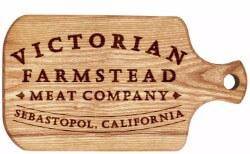Twister Hill Ranch: The Green Grass of August?

Last week Laura and I took a field trip with our new photographer, Kimberly Pritchert of Pasture Raised Photography. We went out to Twister Hill Ranch in Tomales to visit a good family friend, Bruce McGlochlin.
When I first met Bruce, he was Mr. McGlochlin, the shop teacher at Tomales High where I went to school. I actually ended up working for him over a summer. But his history with our family goes back a lot farther than that. My Grandpa Roy, who passed away when I was 12, was a big help to Bruce when he started his flock of sheep.
Bruce and his wife Marsha had bought a beautiful ranch and were set to become sheep ranchers. They already had beef, including the very cool Scottish Highland Cattle (long red hair and horn spans almost as wide as Texas Longhorns). While they were deciding how to buy their first sheep, Bruce asked Grandpa Roy for advice. Grandpa ended up selling him a half dozen older ewes for $5 each to get him started. That tells you what kind of man Grandpa Roy was.
Cut to about 35 years later and I ran into Bruce after moving back to the county. We got to talking and he asked if I was interested in buying some lambs for the meat company we had just started. I was and so we settled on a time for me to come out to his ranch and check them out. I went out and selected the six lambs I liked and started to ask his price. It was then that he told me the story of how my Grandpa had helped him get started. He told me that he and Marsha had discussed it, and that they would only accept $5 per head for this group. I have bought many more lambs at market price from Bruce over the years, and some beef as well. Now you know what kind of man Bruce is.
Anywho, we met Bruce out at his ranch and loaded into his truck to head out to the pasture. Bruce has a great reputation as a steward of the land, and the way he manages his pasture exemplifies everything we love about all our ranchers. Given the severity of the drought we are all aware of, I thought I would talk to him about how he was managing under such extreme conditions. As I expected, he had a plan.

There are many ranchers that grow their own fodder for the lean times of the year. In our area, this is typically Haylage. It is similar to Silage but made up of the native grasses and clover, as opposed to corn stalks. It is stored in large white plastic bags or tubes (20’ in diameter!). To give you an idea of how severe the drought is (as if you don’t hear enough about it on the news) a normal pasture growing season is about 270 days of the year.This year we might have had 90 days.
Putting up this haylage is critical to success of any rancher that wants to limit the $250/ton for organic alfalfa in the winter months he would have to pay to feed his animals without it. The cool thing about all this is that the grasses, stored this way, ferment over time and fermented forage is great for the animals. The not-so-cool thing is that this process is labor intensive and very expensive. What to do???
What Bruce does at his Twister Hill Ranch is swath (mow) his pasture into windrows during the growing season and leave it alone. What happens is the outside grasses dry and almost form a crust. And what that crust protects is incredible! Even in August, the dog days of summer, his cattle are turned out into fields with long, thick rows of swathed grass that are still green in the heart of the windrow and has all the grass seeds intact. The grass seeds are the “secret sauce” to well-marbled beef. That is how our ranchers get such great marbling: grass seeds contain oil and that makes fat. And as we all know (say it with me!)….Fat Equals Flavor!
By managing the grazing patterns of his cows, Bruce is able to feed his cattle year round on high quality feed with out the high labor and mechanical costs of haylage. It is ingenuity like this that will ensure that we have great grass-fed and finished beef all year long right here in the North Bay.
It was a great visit, with the main purpose being the inspection of some beef that I have reserved for the winter months. Bruce and Marsha have always supported our business, and make sure to hold a few beef and several lambs back for us to harvest in the winter. The calves look great, very happy with all that great forage Bruce stored up for them. That’s hard to do in today’s drought conditions, and it is why we are so picky about who raises animals for us and so proud of those that do. Thanks for the visit, Bruce. I learn something every time, just like in high school!
